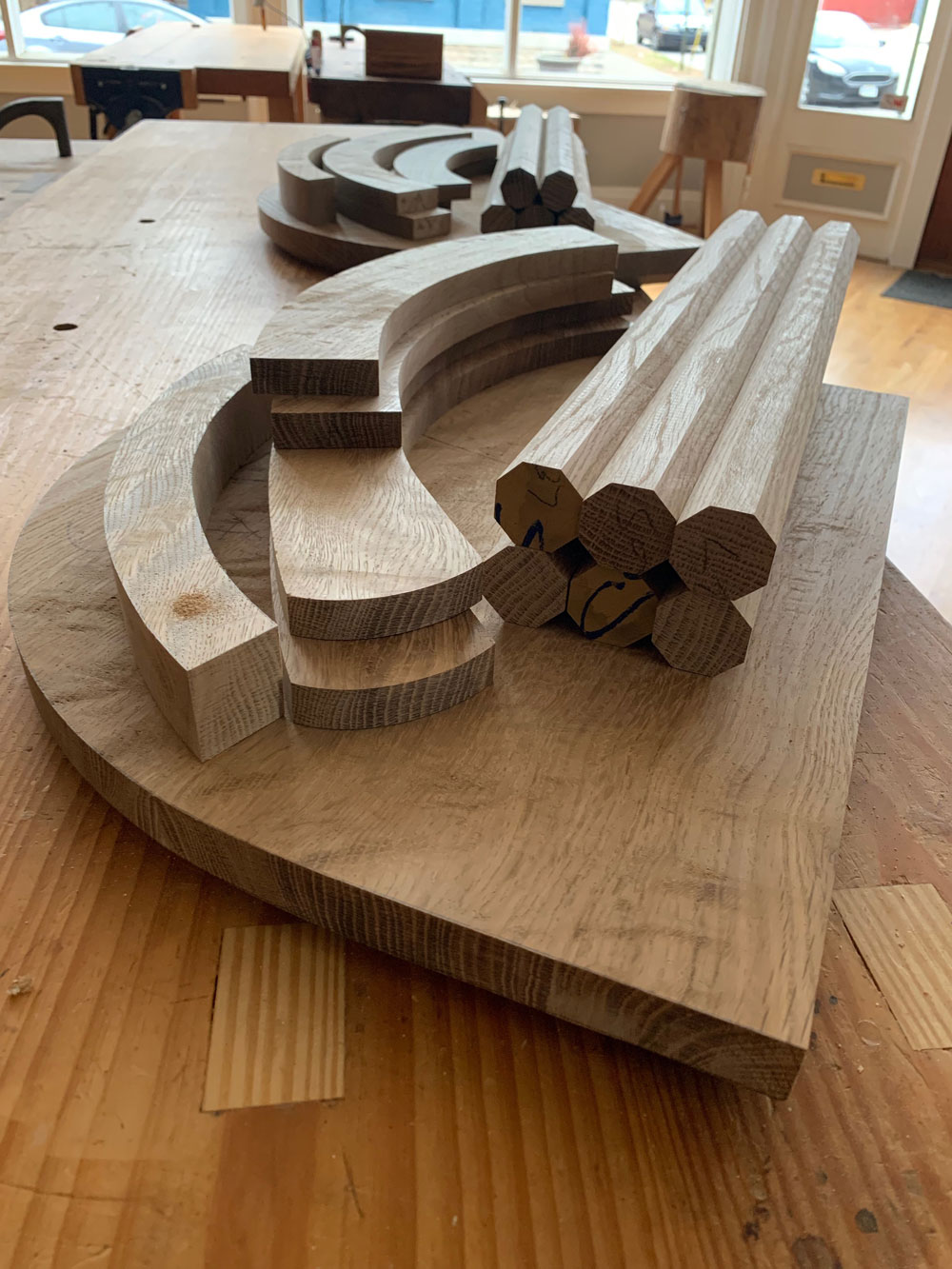
“I’ve heard that all my life, a chairmaker never has a thing to set on.”
— Chester Cornett, as quoted in “Craftsman of the Cumberlands” (University of Kentucky Press) by Michael Owen Jones


“I’ve heard that all my life, a chairmaker never has a thing to set on.”
— Chester Cornett, as quoted in “Craftsman of the Cumberlands” (University of Kentucky Press) by Michael Owen Jones
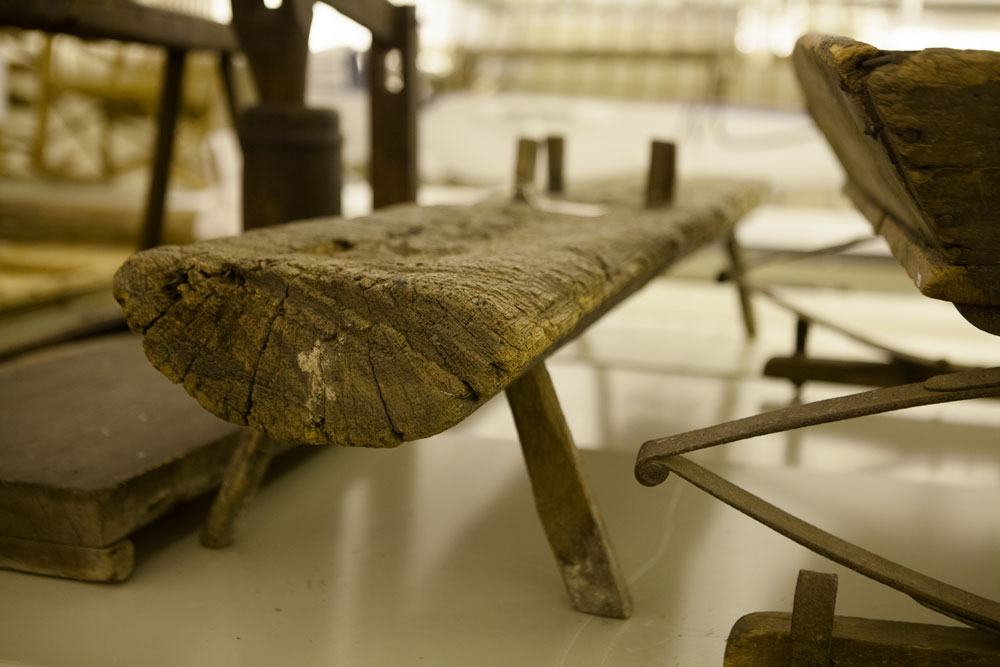
I’ve seen a blurry photograph of a detail of Chester Cornett’s chairmaking workbench and read Michael Owen Jones’s description of the bench in “The Craftsman of the Cumberlands.” At the time I thought: That sounds like a Roman-style workbench.
And yesterday I found out that I was correct.
Brendan Gaffney and I visited the storeroom of the Mathers Museum of World Culture in Bloomington, Ind., to view artifacts related to Cornett. And we got more than we bargained for. In addition to some of Cornett’s traditional chairs and rockers, the Mathers also had Cornett’s incredible “bookcase rocker” (more on that from Brendan in a future entry), a chair made by Cornett’s grandfather, Cornett’s worn-down Pexto drawknife, his worn-out dumbhead shavehorse and his workbench.
Located on the top rack in the storeroom, the workbench is a segment of a log with four staked legs. The workholding consists of three pegs that Chester could wedge his work between – exactly as described by M. Hulot in his 18th-century book on turning and chairmaking.
I’m pretty sure that Cornett didn’t read Hulot. So it is an amazing thing to see this low Roman-style workbench made by a 20th century woodworker who lived in the wilds of Eastern Kentucky. Did he come up with the idea for the bench himself? Was it something he learned from his family members who also were chairmakers?
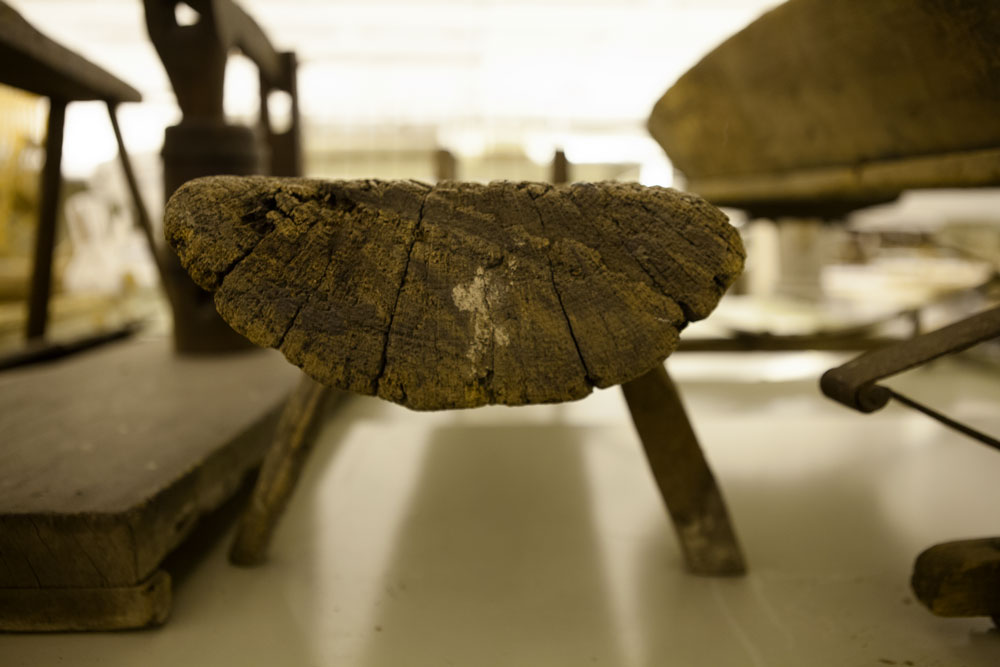
The bench is 11” wide at the top and the benchtop is 10” from the ground. The log segment is 4” thick at its thickest point and about 62” long. The four legs are about 1” to 1-1/4” thick and wide x 8” long (minus their tenons).
So this is just another data point showing that low workbenches, as described in “Ingenious Mechanicks,” haven’t disappeared.
— Christopher Schwarz
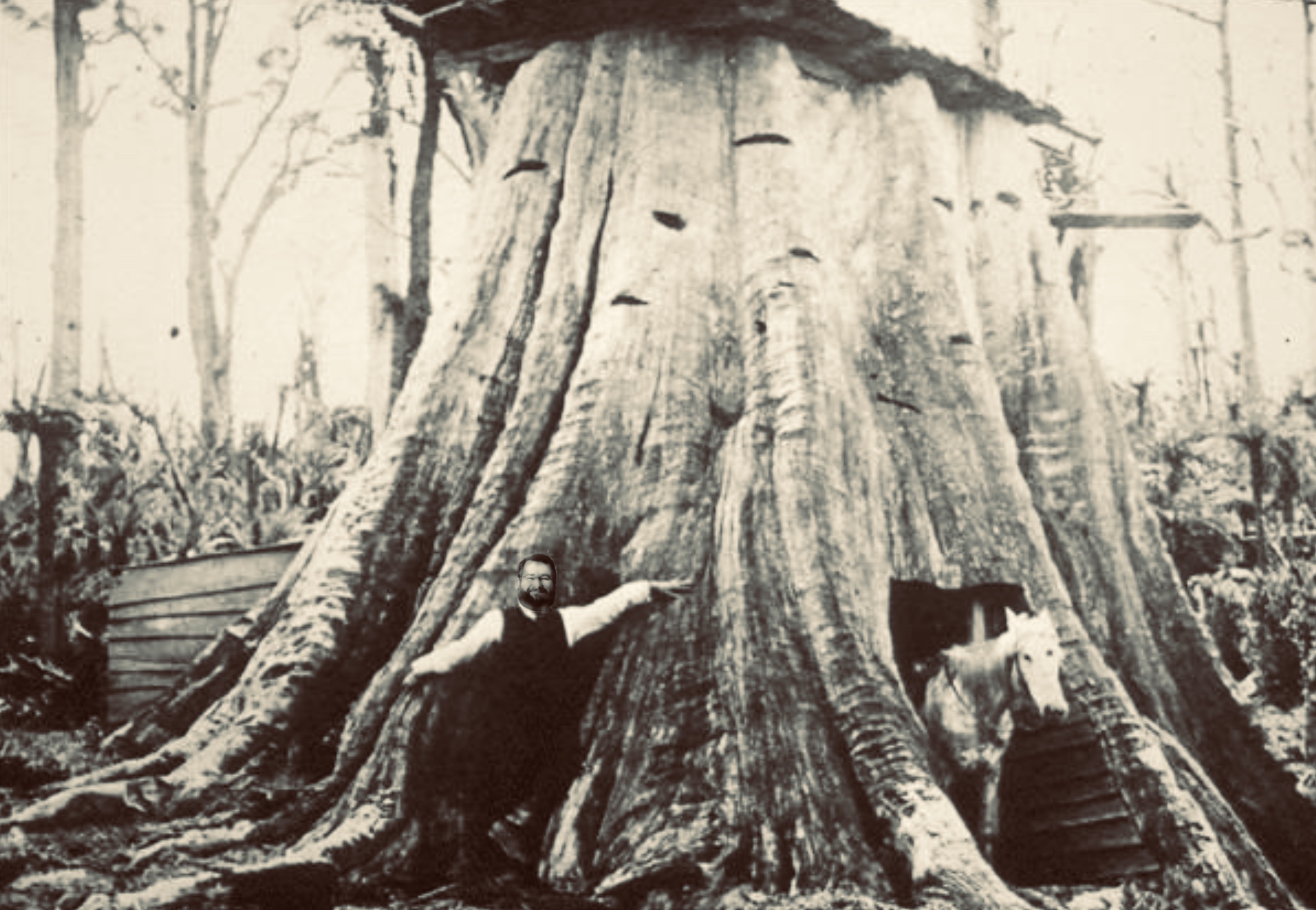
The winner of a Lost Art Press bandana (man scarf) and Chester Cornett button is ‘speed poet’ Bill Rainford. Within 46 minutes of the posting of the Caption Challenge Bill submitted a four-line poem capturing the pleasures and perils of living in a tree stump:
”There was a young couple who lived in a stump/They had so many children they clearly like to hump/With only one room and only one bed/They should grow an addition as that tree isn’t dead.”
There were 233 entries that arrived before the cut off and there are five that I have selected as Honor Mentions:
Bob Brown submitted, “Man leaves woman in trunk.” A nice murder-mystery vibe and another reminder to me to never buy a very large suitcase.
Samuel Holland submitted, “Why would I ask for a tree bedroom house? It makes no sense.” I like puns and this also reminds me of a guy I ran into once. He kept saying “tree” on the very tree-less waterfront in Jersey.
immltasbi submitted a very short short story that reminded me of Tom Bombadil from ‘The Fellowship of the Ring’: “Let’s cut a tree, to make a home. A branch for spoons and other for the plates…”
Dave was the first to caption ala Chester Cornett: “wey make ur hows ahhom are heit cant B mad.”
Lastly, to award outstanding perseverance, an Honor Mention goes to J.C aka BLZeebub for contributing 14 entries. I want this person on my side in a fork fight.
I will contact the Honorable Mentionees and send you a small thank you for your efforts.
Thanks to all for participating and Happy New Year!
–Suzanne Ellison
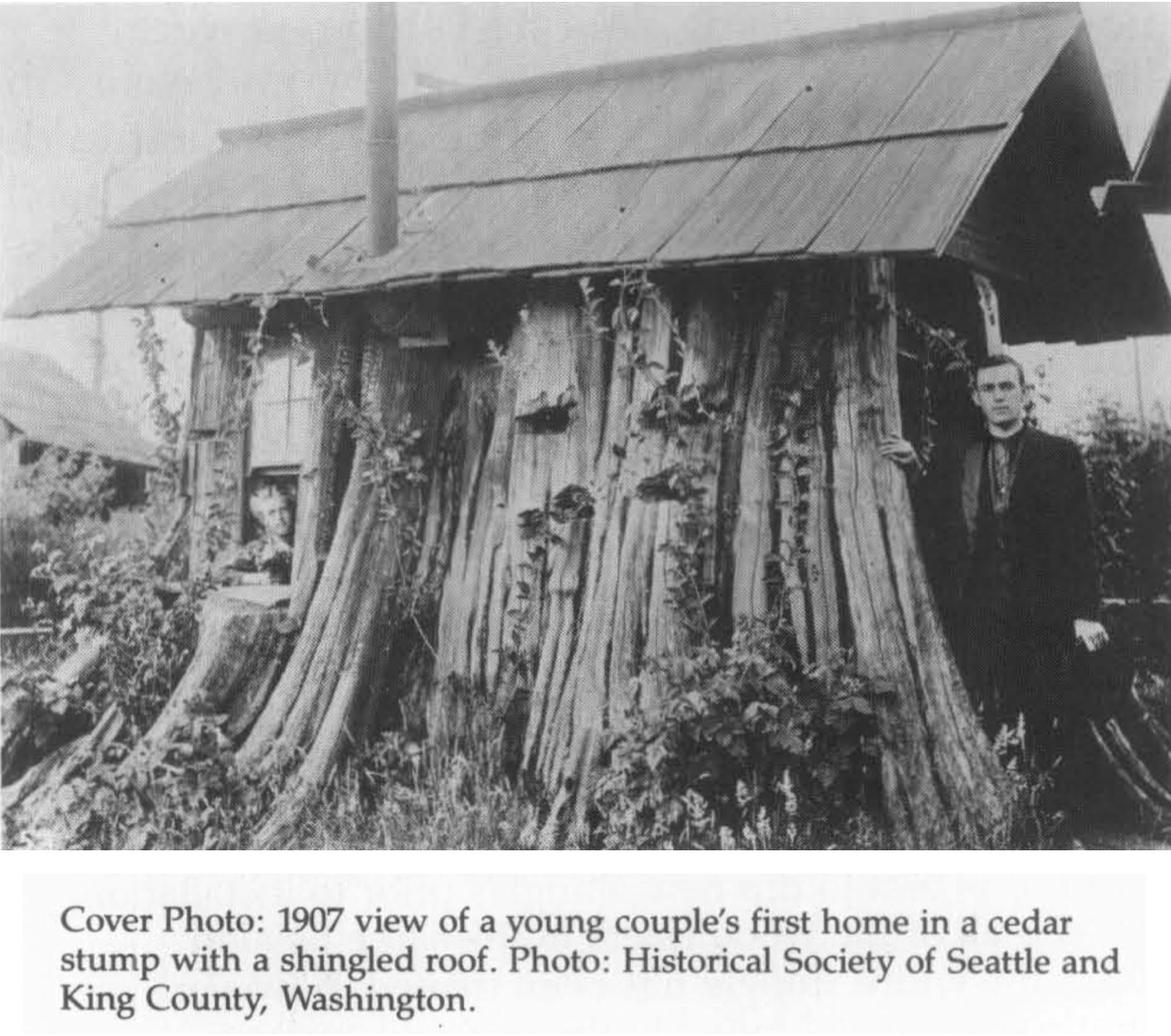 Yes, my darlings, we will have a prize for the best entry submitted for this Caption Challenge.
Yes, my darlings, we will have a prize for the best entry submitted for this Caption Challenge.
Sharpen your wits and enter** as many times as you wish. The Challenge ends on January 1, 2019 at 1500 hours in my time zone (North America EST).
I will select the winner and the two-pronged prize is a Lost Art Press bandana and a Chester Cornett button (pictured below) and Chris Schwarz will send these anywhere in the world.
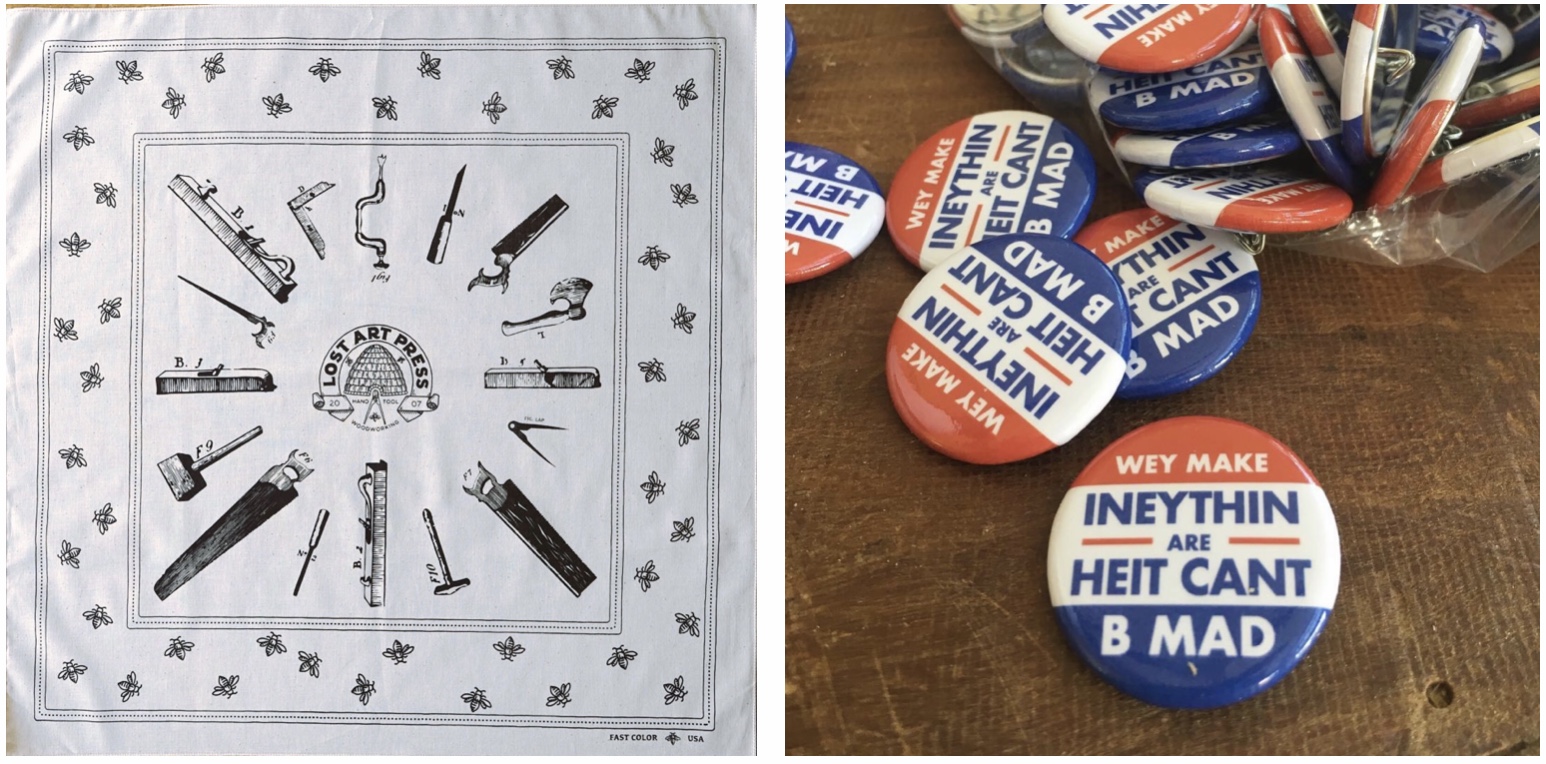
**Use Comments to make your caption entry.
— Suzanne Ellison
Editor’s note: This is the third Chair Chat with Rudy and Klaus where today we discuss not one but three chairs.
Please note that we don’t have much background information on today’s three chairs. We don’t know their countries of origin nor when they were built. And we only have one picture for each chair.
We don’t authenticate chairs – we just talk about what we like and don’t like based on the photos. One more note: A few of you asked why the second chair chat was more tame than the first. Answer: We’re still finding our groove. As always, salty talk follows. Don’t read any further if watching “Animal Planet” makes you blush.